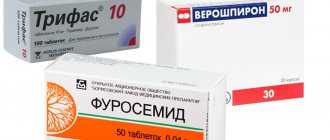Exposure to even small amounts of mercury can cause serious health problems in adults and poses a threat to a child's development in the womb and early life. Mercury is a neurotoxin. The impact of mercury on human health depends on a number of factors:
- Form of mercury (such as methylmercury or metallic mercury);
- The amount of mercury entering the body;
- Age of person exposed to mercury (unborn infants are most vulnerable);
- Duration of exposure;
- Route of entry into the body: inhalation, ingestion, contact with skin;
- The health status of the exposed person.
The effects of mercury exposure can be very severe, subtle, or non-existent, depending on the factors listed above.
What consequences are possible if the thermometer is damaged?
Mercury belongs to the first toxicity class poisons. This means that once the substance enters the body, the dangerous consequences are irreversible.
Mercury itself is practically not dangerous, but since it is the only metal that remains in liquid form under room conditions, its vapors and inorganic compounds (sublimate, calomel, mercuric cyanide) are dangerous. It evaporates at a temperature of +18 degrees, and the rate of its evaporation is 10,000 times less than the rate of evaporation of water.
A regular thermometer contains 1–2 grams of mercury. This is enough to poison all family members in the room where the thermometer broke. The danger also lies in the fact that the small balls are very mobile. They can scatter on the floor and roll into hard-to-reach places, from where they will evaporate for ten years, poisoning everyone around.
Please note that mercury can accumulate in the body. This means that if a substance sufficient to cause poisoning is ingested, symptoms may not appear immediately.
Why is mercury dangerous?
A transition metal from the zinc subgroup, belonging to chemical elements of hazard class I - mercury.
It is not the silvery-white liquid that poses a danger to human health, but its vapor. Toxic fumes begin to be released at a temperature of 18C. In an apartment, the temperature is usually higher, so the vapors spread much faster.
The fumes enter the body through the respiratory tract, then the toxic substance affects the central nervous system. The liver, kidneys and brain are most affected.
The metal has the property of accumulating in the human body; about 80% of the toxic substance is not excreted.
Not only mercury vapors pose a threat to humans, but also metal compounds. One of the most toxic is methylmercury. The largest poisoning occurred in Japan (1956). Chisso systematically dumped waste containing high levels of mercury into a bay near the city of Minamata. The fish that live in these waters have caused poisoning to a large number of people.
The fact that severe intoxication claimed the lives of 35% of the total number of victims shows how dangerous mercury is. Methylmercury poisoning was later given the name Minamata disease.
In what cases should you call specialists?
The Ministry of Emergency Situations on its official website gives detailed recommendations for the collection of mercury in residential premises. Immediately after the thermometer has broken, it is better to call the rescue service at 101 or 112 and consult with a representative of the Ministry of Emergency Situations on this issue.
Unfortunately, in Russia there is no well-functioning system for organizing the collection and disposal of mercury. In some cases, representatives of the SES and the Ministry of Emergency Situations do not even go to the scene of the incident, and give recommendations for collecting mercury over the phone. If employees refuse to respond to a call, contact a higher authority and ask for help. If you do not get a team to come out, collect the mercury yourself and take it to a radioactive waste collection point.
In megacities, there are often private companies that collect and dispose of the remains of broken thermometers and mercury. They also check the air for fumes. However, since these firms are private, you will have to pay to call a specialist.
Disposal of residues: why, where and how important it is
Proper disposal of thermometer residues is important due to mercury pollution in the environment. Every citizen bears social responsibility for his actions that may cause harm to others. Mercury fumes are poisonous, which is why the temperature meter requires a special disposal site.
A free option can be to call 112, this is the Ministry of Emergency Situations service, where employees are ready to give instructions at a specific moment and go out to pick up the substance and things contaminated with it for disposal. But they don’t always arrive as quickly as possible, so it’s better to carry out the basic procedures yourself.
There is an option to order the services of special companies involved in eliminating such incidents. It doesn’t cost a penny, but the owner will already know that the space has been cleared of fumes, the level of the substance has reached normal, and it is safe to live in the apartment or house. They take the thermometer, leave the home clean, and the owner happy with the result.
What should not be done if a thermometer breaks in the room?
In order not to aggravate the problem, and not to scatter mercury around the room even more, under no circumstances:
- Do not touch mercury with bare hands.
- Don't sweep up the mercury. The broom will break it into smaller particles and scatter it around the room even more.
- Don't vacuum. When using a vacuum cleaner, warm air is released, which promotes the rapid evaporation of the substance.
- Do not use a magnet. Not only will it not collect the balls of the substance, but it will also scatter them around the room even more.
- Don't wash the floor. A damp or dry cloth will only rub the mercury over the surface being treated.
- Do not throw the collected thermometer fragments and mercury into the garbage disposal, as it will continue to evaporate there.
- Do not flush the substance down the toilet or sink, as the mercury will settle on the pipes and continue to evaporate.
- Do not create drafts in the room, otherwise mercury vapor will spread over a large area.
- Do not bury or burn the substance, causing irreversible consequences for the environment.
- Do not wash items that have been exposed to mercury, but rather recycle them.
- Do not turn on the air conditioner, otherwise mercury vapor will settle on its filter.
Be sure to read the guidelines for disposing of mercury at home.
How to collect mercury at home
The main thing is to carry out all the actions correctly and without panic, and first of all call the Ministry of Emergency Situations.
Clearing the premises from strangers
First of all, isolate all people and pets from the premises. Close the door to the room to prevent evaporation from spreading throughout the apartment.
Airing the room
To reduce the room temperature, open a window for ventilation. Also remember to turn off all heating devices if they are on. Your task is to reduce the air temperature so that the mercury does not evaporate.
Be extremely careful not to allow a draft to form in the room, otherwise air vapor will spread the toxic substance throughout the apartment.
How to collect mercury
When all household members have been removed from the apartment, the room is closed, and the windows are open, begin collecting mercury. First of all, prepare the necessary tools and substances. You will need:
- unnecessary clothes that you won’t mind throwing away later;
- latex gloves;
- shoe covers;
- respirator or cotton-gauze bandage;
- safety glasses (if available);
- medical syringe;
- brush;
- paper;
- plaster or tape;
- container with a tight lid for collecting toxic substances;
- flashlight.
Also prepare the demercurization solution in the required quantity in advance.
Procedure:
- Change into old clothes, put gloves on your hands, put a bandage on your face, and shoe covers on your feet.
- Prepare a demercurization solution and pour the required amount into the container.
- Using a wet brush, collect the largest balls onto the paper.
- Aspirate the middle particles of the substance with a syringe.
- Collect the smallest ones with tape.
- Using a syringe needle, remove mercury particles from hard-to-reach places.
- Turn off the lights or close the curtains and shine a flashlight across the floor to spot any remaining glare.
- Place the collected mercury and fragments of the thermometer into a container with the solution and close the lid tightly.
You definitely need to look at the area where the thermometer broke, again using a flashlight.
After this, start cleaning the room. Subsequently transfer the collected mercury to the collection point.
Demercurization
Demercurization is the process of removing mercury using physical methods or chemicals, disinfecting the premises to prevent poisoning of family members. For demercurization, a special solution is prepared, into which the remains of the thermometer are placed and the contaminated surface is treated.
Potassium permanganate solution (potassium permanganate)
For temporary storage and disposal of mercury, use a strong solution of potassium permanganate.
When diluting the substance, focus on the color of the mixture, which should be deep purple. You can use both hot and cold water. Also add salt and vinegar to the liquid at the rate of 1 tbsp. spoon per 2 liters of prepared solution.
Fill a three-liter jar with potassium permanganate solution more than halfway, and place the collected mercury in it. Treat all surfaces that came into contact with the substance with the remaining liquid.
Please note that potassium permanganate can turn things pink, so proceed very carefully.
Be sure to place the broken thermometer and all its elements in a jar of solution, first wearing gloves.
Bleach solution
Both dry lime and liquid bleach, for example “Belizna,” are suitable. Mix 0.5 liters of the substance with 2.5 liters of water. Treat all surfaces in the contaminated room with the prepared solution. After 15 minutes, rinse off the substance with clean water. Repeat the procedure three times to ensure results. When doing this, make sure the room is well ventilated.
Soap and soda solution
This product can be used either independently or in combination with other demercurization methods. Dilute 100 g of soap and 100 g of soda in two liters of warm water. Make sure that the substances are completely dissolved and only then begin processing.
How to finally clean the room?
After collecting mercury, thoroughly treat all surfaces and objects in contact with it with a demercurization solution. For the best effect, use all substances in combination. First, wash all surfaces with a bleach solution, repeating the procedure three times. After drying, treat all items again with a solution of potassium permanganate.
After final cleaning of the room, remove clothing and protective items and pack them in a plastic bag. Rinse your mouth several times with soda solution and wash your body thoroughly. Take an activated charcoal tablet and drink plenty of fluids. Every day for a week, while the room is closed from visitors, treat it with a bleach solution.
Step-by-step instructions for collecting mercury
If the thermometer breaks and liquid leaks out of it, you must immediately remove people and animals from the room, open the window and close the door. If there is an air conditioner, it must be turned on in cooling mode to reduce the rate of evaporation of liquid metal. Then you should prepare a jar of water, put on synthetic clothing, rubber shoes, put on a gauze bandage and rubber gloves. After this, you can begin to inspect the premises. It is better to use a flashlight, the rays of which will create glare from the balls. Once the area of infestation has been determined, its elimination should begin.
From the surface of the carpet
Carpeting absorbs not only vapors well, but also small particles of mercury. It can only be removed from the pile with a powerful vacuum cleaner. But, after this, the product will be contaminated, and the concentration of vapors in the air will increase sharply. You need to make a balanced decision when deciding whether you can sacrifice carpet or appliances. You also need to take into account how much mercury will erode from a thermometer from a room treated with a vacuum cleaner. This period may take up to a week.
Upholstered furniture
It is possible to clean fabric upholstery only after removal and only in specialized companies, which are not available in every city. It is better to sacrifice the upholstery, but the furniture should be disassembled and the joints of the parts should be cleaned using a syringe.
From a flat floor
To collect balls from a flat surface, it is better to use sheets of paper and cotton wool. Metal is removed from cracks and holes using a syringe. The collected material is immersed in a jar, which is closed with an airtight lid. The treated surface must be washed thoroughly with the addition of bleach.
After disinfection, all clothing in which work was carried out must be placed in a plastic bag or container and handed over for disposal.
How to remove mercury from the floor
If the thermometer breaks on a bare floor covered with linoleum and tiles, it is enough to simply collect the remaining toxic substance using the indicated method. After collecting mercury, be sure to treat the floor with a demercurization solution.
But if the floors in the room consist of wooden boards with many cracks, you will have to completely recycle the covering. The same applies to cases where mercury gets under the baseboard. After dismantling, be sure to pack the boards and baseboards in plastic bags and dispose of them, and treat the cracks with a disinfectant from a spray bottle.
Can mercury be collected from carpet or upholstered furniture?
If mercury gets on upholstered furniture or carpeting, the best option is to throw it away. If you cannot dispose of carpet or upholstery, follow these guidelines:
- try to collect balls of toxic substances from the fleecy surface as much as possible using a syringe and tape;
- roll the contaminated carpet from the edges to the center to prevent the mercury from spreading across the floor;
- Pack the furniture or carpet in plastic and take it outside;
- move away from residential buildings and crowded places;
- carefully beat the carpet or upholstery over the cellophane;
- leave the item to air for 2–3 hours;
- Afterwards, at home, treat the carpet and upholstery with a solution of potassium permanganate or bleach.
If you doubt that all particles of the substance have been removed from the fleecy surface, it is better to seek help from a specialized service.
What to do if mercury is collected with a vacuum cleaner
If it so happens that the room where the thermometer crashed was nevertheless treated with a vacuum cleaner, reduce the temperature in the room by any means.
Disassemble the vacuum cleaner into parts and put it in a plastic bag. There are 3 possible ways to solve the problem:
- Demercurize the vacuum cleaner yourself. It is extremely difficult to do this at home, since it is not always possible to get to all parts of the device.
- Take the vacuum cleaner to a collection point for hazardous substances.
- Order processing of the device from a specialized company.
Please note that a vacuum cleaner containing mercury should not be thrown into the garbage disposal.
What you definitely shouldn't do
If the thermometer breaks, you definitely cannot:
- Use a broom and dustpan to collect the leftovers because this will not give the expected result. The rods will not collect the balls, but can crush them and worsen the situation, because the resulting dust will already be collected in a household way. To do this, you will have to hire a special company to clean the premises and dispose of the toxic substance.
- Try to eliminate the consequences of the incident with a vacuum cleaner. This contributes to an even greater spread of mercury in space at the moment. And the residue will be sprayed into the air during many subsequent cleanings.
- Dispose of the thermometer in public waste collection areas. This poses a danger to all residents of the entrance and surrounding area.
- Get rid of metal balls by flushing them down the toilet. They will not go far into the dungeon, but will remain very close to the dwelling on the pipes, and it will be very difficult to get out of there.
- Leave and continue to wear or use clothing that has been in contact with a hazardous substance. This is harmful not only to the wearer, but also to others. Contaminated clothes can affect other clothes if washed together in the same washing machine.
- Rinse cloths in the sink or bathroom after procedures, this will spread harmful pollen throughout the plumbing and pipes. Place in a tight bag and dispose of with other waste.
If it happens that a child breaks a thermometer, then he should not be allowed to come into contact with mercury; if you have any doubts whether he was in contact with the substance, you should consult a doctor.
You realized that you collected the fragments and mercury incorrectly.
Incorrect actions when collecting mercury residues can lead to poisoning, so if this happens, it is important to adhere to the principles of preventing complete absorption. This means that it is worth giving yourself or someone else first aid in the form of drinking plenty of fluids and taking sorbent. If something is left untidy, it must be tidied up according to the rules.
You also need to look at how closely and for a long time the contact with the substance occurred. If there were minor violations, then you can observe the victim and give the necessary medication. If you come into close and direct contact with metal balls, you should consult a doctor to avoid serious negative consequences.
If the problem concerns a child, especially a small one, be sure to consult with your pediatrician, who is responsible for the baby’s health. In some cases, there are suspicions that the little man swallowed part of it. Then you will need an urgent appropriate examination, a specialist’s opinion, and, if necessary, taking measures.
What to do if the thermometer is cracked under the armpit
If mercury gets on your skin, for example, a thermometer breaks right under your arm, do not panic. Since it is not mercury itself that is dangerous, but its vapor, the harm from it will be the same as if a thermometer were broken on the floor. In rare cases, allergic reactions may occur on the skin, which can be treated with standard medications.
To avoid the risk of allergies, immediately after contact with the skin, wash off the mercury with a solution of potassium permanganate. Moisten a cotton sponge with the same solution and hold it where the substance comes into contact with the skin.
Monitor your skin reaction. If no redness or rash appears within 24 hours, then the allergy has not appeared.
Simple rules for using a thermometer.
A thermometer containing mercury is a potential hazard. It is important to prevent situations where the release of a toxic substance becomes a reality. There are conditions that must be observed during storage and use of the temperature meter:
- It is unacceptable to give it to children for play or for a child to hold.
- It must be completely inaccessible to them.
- The process of using the thermometer for its intended purpose should not be left unattended by adults, but it is better to hold the small handle with your own hand. After all, kids can forget, think and lose vigilance.
- Storage without a special case is not recommended; it is important to take care of the correct plastic case.
- Shaking the temperature meter should be done away from solid objects, as safely as possible and with dry, clean hands (so as not to slip out).
If there are pets in the house, then this also needs to be taken into account; your pet can throw the device onto the floor or otherwise damage its integrity, thereby harming itself and the residents. A first aid kit with a key, located at the mezzanine level, where only an adult can reach by raising his hands to head level, does an excellent job of keeping safe. After all, if you take something out from above, where the eye cannot reach, then this is also not very safe.
What to do if a mercury thermometer breaks and the mercury is not found
In cases where the thermometer broke, but the mercury could not be found, for example, the thermometer was broken by a child in your absence. First of all, it is worth understanding that mercury will not evaporate in such a short time. Try to find the balls of the substance yourself by shining a flashlight on the surface. The particles should shine.
If the thermometer was broken over fluffy upholstery or carpet, you can check for its presence with a homemade brush made of stranded copper wire. To do this, clean the wire from the outer winding, leaving thin copper wires. Use the resulting brush to notice the infected surface. If the ends of the wires change color to white, it means that the mercury still remains and continues to poison you. Take steps to dispose of it immediately.
To sleep peacefully, call a special demercurization service. Its specialists will check the room for the presence of fumes, find the source of infection and neutralize interior items with a special solution.
What to do if a child breaks a thermometer
The main thing is not to scold the child, otherwise next time he will simply keep silent about what happened.
Step by step guide:
- Inspect your child's hair, body, and clothing for mercury particles. If pellets are found, carefully collect them in a jar with demercurization solution.
- Induce vomiting in your child.
- Remove clothing and bathe your child thoroughly.
- Give your baby an activated charcoal tablet and drink plenty of water.
- Take your child out into the fresh air.
- Collect the mercury, treat the room and close it from visitors.
Give your child more fluids throughout the week.
How to dispose of a thermometer with mercury
If you collected mercury yourself and did not seek help from specialists, under no circumstances should you throw the remains of a broken thermometer and the substance itself into the garbage disposal.
Call the Ministry of Emergency Situations, perhaps specialists will recommend to you where to take the collected material. Often in large cities, special containers are installed for collecting batteries and mercury thermometers or a mercury collection point is organized at the central SES or Ministry of Emergency Situations.
If you still haven’t found any options for disposing of mercury, take the container with the collected materials to a remote non-residential area and bury it as deep into the ground as possible.
What to do if you do get poisoned?
Hazardous mercury vapor can cause harm to the body, so monitor your body closely for changes. Intoxication can take place in 2 forms:
- acute, when symptoms appear immediately after contact with the substance;
- chronic, when signs of poisoning become apparent after some time.
The complexity of both forms depends on the individual characteristics of the body and the amount of substance entering the blood.
Symptoms
Symptoms of acute intoxication include:
- weakness;
- headache;
- nausea and vomiting;
- metallic taste in the mouth;
- a sore throat;
- chills;
- diarrhea;
- increased bleeding of gums;
- traces of blood in vomit and feces;
- high salivation;
- cough;
- shortness of breath;
- traces of mercury in urine;
- increase in body temperature.
The chronic form is characterized by the following symptoms:
- severe headache, migraine;
- insomnia;
- loss of appetite;
- tremor of the limbs or the whole body;
- impaired concentration and memory;
- chronic fatigue;
- depression;
- heart rhythm disturbance;
- decrease in blood pressure.
Remember, if you do not pay attention to the symptoms and do not visit a doctor in time, complications in the form of serious illnesses and even death are possible.
First aid
If you notice the first symptoms, call an ambulance immediately. While you are waiting for doctors, provide first aid to the victim:
- rinse the stomach and induce vomiting;
- provide peace;
- give the sorbent to drink;
- drink plenty of water.
If the victim has lost consciousness, lay him on his side and prevent his tongue from sticking. Provide fresh air and loosen clothing that makes breathing difficult.
Prevention of poisoning
If you are unsure that the thermometer will remain intact, it is better to use a mercury-free thermometer to measure body temperature.
If you still prefer mercury devices, follow certain rules for its use and storage:
- keep the thermometer out of the reach of children only in a special case;
- do not let children play with a thermometer;
- When measuring temperature, hold the thermometer tightly under your arm;
- shake the thermometer so that there is free space around your hand.
Do not neglect the rules, and then you will not have to look for ways to solve the problem with a broken thermometer.
What are the signs of mercury vapor poisoning?
We figured out what to do if a thermometer breaks and how to protect yourself as much as possible, but it wouldn’t hurt to know about the manifestations of poisoning with this substance.
If a thermometer suddenly breaks, the consequences of the incident are not so terrifying. Acute vapor poisoning is impossible at home and cannot be caused by a thermometer alone. The condition occurs exclusively during large-scale accidents at enterprises, when the concentration of vapors reaches a critical level and they enter the body in a short period of time.
The first signs of poisoning will be noticeable after 2-3 hours. Most often this is severe malaise, lack of appetite, and headaches. A metallic taste appears in the mouth, it becomes painful and difficult to swallow, the gums become inflamed and begin to bleed. Over time, acute abdominal pain, diarrhea, chills, shortness of breath and difficulty breathing are added to the above symptoms. Body temperature often rises to 40 degrees. Ignoring these symptoms and making an incorrect diagnosis can be fatal.
Chronic mercury poisoning occurs when long-term exposure to the body occurs at relatively low concentrations. Long-term exposure refers to a period ranging from several months to a couple of years.
In case of chronic poisoning, the central nervous system is the first to be affected. In the first stages, drowsiness, excessive fatigue, frequent headaches, and apathy appear. Poisoning the body with mercury vapor also affects a person’s behavior; he becomes irritable, inattentive, and unsure of himself.
Subsequently, such an unpleasant syndrome as mercury tremor appears. Trembling begins with the fingers, then moves to the eyelids and lips; in more severe cases, tremor of the lower extremities and the whole body is observed. In addition, poisoning is often accompanied by loss of taste and skin sensitivity, increased sweating, and an enlarged thyroid gland. The worst thing about chronic poisoning is that all these symptoms and consequences can appear several years after contact with mercury.
Micromercurialism belongs to the category of chronic poisoning and occurs when mercury in negligible concentrations affects a person for 5-10 years. It is possible to find out the cause only if you pay timely attention to a number of symptoms, such as fatigue, increased excitability, and weakened memory.
Micromercurialism can occur even without direct human contact with mercury. It will be enough to be near a room in which a thermometer was once broken; the mercury did not leak out, but was not properly cleaned.
At the first signs of illness with suspected poisoning, you must leave the room and rinse your mucous membranes. This recommendation applies to the nose, mouth and eyes, as well as exposed areas, even if they have not come into contact with mercury. Rinsing can be done with running clean water or a weak solution of potassium permanganate, diluted to a light pink color.
If necessary, gastric lavage can only be done through a tube; other methods will be ineffective and even dangerous. A course of sorbents and intravenous administration of an antidote are also prescribed.
Is there mercury in modern thermometers?
Currently, the variety of thermometers for measuring body temperature is very large. In addition to mercury thermometers, you can find thermometers on sale:
- electronic;
- alcohol;
- infrared;
- galliaceae.
An electronic and infrared thermometer can be easily distinguished from a mercury thermometer. They differ significantly in appearance and nature of application.
Gallium and alcohol thermometers, in turn, strongly resemble mercury ones. They have the same shape of shell, scale, capillary tube.
- An alcohol thermometer can be easily distinguished from a mercury thermometer. It has a red or blue scale, which will simply leak if its integrity is damaged.
- A gallium thermometer measures temperature as accurately as a mercury thermometer. The only difference is the weight of the device: a mercury thermometer will weigh heavier than a gallium thermometer. This can be checked by placing a thermometer in a container of water: a gallium thermometer will float, and a mercury thermometer will sink.
If you break a mercury thermometer, do not panic. The situation can still be saved without infecting the body with harmful fumes. To do this, follow all prescribed rules for treating the premises, collecting mercury and disposing of it. Remember, it is better to prevent a situation than to eliminate the consequences, so be careful when storing the thermometer or replace it with a similar device without mercury.
What is a mercury-free thermometer?
A mercury-free thermometer is a measuring device for determining body temperature that does not contain mercury. Medicine uses products that operate according to certain principles with varying degrees of error. One of the safe analogues is a gallium thermometer. The alloy contained in the flask is completely safe for health. The differences can only be determined by the weight of the devices and their cost, since gallium has a small atomic mass and a higher price. If the device is damaged, only its fragments pose a danger.
Electronic thermometers
There are commercially available measuring instruments whose operating principle differs from devices with expanding liquid metal. Information is read using sensors, and the results are displayed on the display. Based on this, the question of whether there is mercury in an electronic thermometer may not concern buyers. There is no toxic metal in modern devices.
There are the following types of electronic thermometers:
- Infrared. The measurement is made by analyzing the intensity of IR radiation that the human body produces. The product is applied to the face, the result is given after 5-6 seconds. At a high cost, the measurement accuracy of IR devices is ± 0.2ºС.
- Electronic. The operating principle is based on changes in the properties of silicon under the influence of heat. The measurement requires a time period of 1-3 minutes. The error of different models varies within ± 0.2-1.5 ºС. Such devices are produced both in classic versions and in the form of bracelets, key rings and baby pacifiers. The shelf life depends on the condition of the built-in battery or replaceable batteries.









